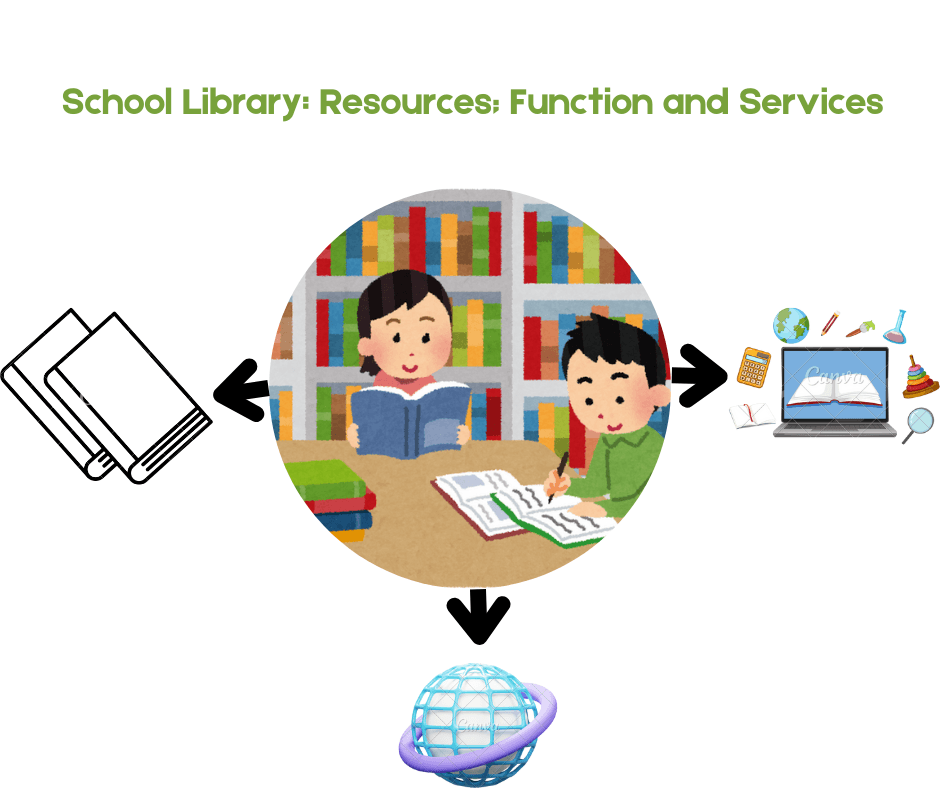School libraries are essential components of the educational environment, playing a vital role in shaping students’ reading habits, enhancing critical thinking skills, and advancing their subject knowledge. They serve not only as resources for students but also as support systems for teachers in curriculum development, course design, and the creation of assignment outlines. As such, school libraries are often regarded as learning hubs where students, educators, and staff come together to foster a rich educational atmosphere.
Definition of a School Library
A school library, also known as a school library media center, is a dedicated space within a school that provides access to a diverse array of information resources and services. These can benefit students, staff, and often parents at both public and private schools. The library is designed to support the educational mission of the school by ensuring that all members of the school community have equitable access to books, information, and technology resources, thereby facilitating their academic success and intellectual growth.
Purpose of the School Library
The primary purpose of the school library media center is to guarantee that every member of the school community, including students, educators, and families, has equitable access to a wide range of resources. According to the American Association of School Librarians (AASL, 2008), this includes access to books and reading materials, comprehensive information resources, and the necessary information technology tools. Ultimately, the library aims to serve society by preserving and sharing the records of human thoughts, ideas, and expressions, ensuring these resources are available for all.

Resources Available in the School Library
School libraries are stocked with a variety of resources, which can be broadly categorized into printed, electronic, and digital resources.
Printed Resources:
1. Textbooks: Fundamental resources for core subjects.
2. Reference Books: Encyclopedias, dictionaries, and other essential reference materials.
3. Fiction Books: Works of fiction that stimulate imagination and creativity.
4. Biographies: Life stories of significant historical figures and contemporary role models.
5. Magazines: Periodicals that provide insight into current events and trends.
6. Newspapers: Daily or weekly publications that keep users informed about local, national, and global news.
Electronic Resources:
According to Ali & Ahmad (2019), key electronic resources in school libraries include:
1. Electronic Books (eBooks): Digital versions of books that can be accessed online.
2. Databases: Curated collections of information and research articles.
3. Useful Websites: Carefully selected online resources that enhance learning.
Digital Resources:
These include various technological tools, such as:
1. Computers: Essential for research and information retrieval.
2. Laptops: Portable devices that support learning anywhere within the school.
3. Tablets: Touchscreen devices that facilitate interactive and digital learning.
4. Projectors: Equipment for displaying visual information to larger groups.
5. LED Screens: For presentations and instructional purposes.
6. Internet Connections: Necessary for access to online resources and digital learning platforms.
Functions of the School Library
The school library serves as a cornerstone of the educational experience, enriching the learning journey through a variety of essential functions:
Enhancing Student Learning Outcomes: School libraries are treasure troves of knowledge, offering students access to a wide range of resources—from books to digital materials—that significantly bolster academic performance. By providing tailored support to meet individual learning needs, they empower students to excel.
Cultivating a Supportive Reading Culture: These libraries create inviting spaces that ignite a passion for reading. By organizing engaging events, such as book clubs and reading challenges, they inspire students to discover the joys of literature, fostering an atmosphere where reading is not only educational but also an enjoyable pastime.
Advancing Digital Literacy: In an age where technology is woven into every aspect of education, school libraries play a pivotal role in equipping students with the skills necessary to navigate the digital landscape. Through workshops and hands-on activities, they teach students how to effectively utilize various digital tools and resources, preparing them for future academic and professional endeavors.
Fostering Creativity: Libraries provide stimulating environments that encourage imaginative thinking and creative exploration. With dedicated spaces for art, writing, and collaborative projects, they inspire students to push boundaries and develop their unique ideas.
Safeguarding Knowledge: Functioning as custodians of information, school libraries ensure that valuable knowledge and cultural resources are preserved for current and future generations. They curate collections that reflect diverse perspectives, encouraging students to value and protect our shared history.
Encouraging Collaboration: School libraries serve as hubs of teamwork, facilitating collaboration among students and educators alike. By providing flexible spaces for group study, brainstorming sessions, and resource sharing, they foster a community of learners who support each other’s academic endeavors.
Supporting Educators: Beyond serving students, school libraries are invaluable partners for teachers. They assist in curriculum development and course design, providing access to educational materials and resources that enhance the teaching process. This collaboration enriches the learning experience, ensuring that both students and educators benefit from a well-rounded educational framework.
Comprehensive Services Offered by the School Library
School libraries offer a myriad of services designed to cater to the diverse needs of students, educators, and the wider school community:
1. Teaching Resource Support: Librarians act as invaluable partners for educators, providing expert guidance on how to effectively manage, curate, and enhance their teaching resources. This support helps to enrich the overall learning experience in the classroom.
2. Promoting a Reading Culture: The library undertakes various initiatives, such as reading challenges and themed events, to inspire a lifelong love of reading among students. These programs aim to instill enthusiasm for literature and cultivate habits that foster personal growth and exploration.
3. Reference Services: Knowledgeable librarians are on hand to assist students and faculty in navigating a wealth of both printed and electronic reference materials. This service empowers users to access accurate information efficiently and enhances their research skills.
4. Training and Workshops: Regularly scheduled workshops offer targeted training in information literacy skills. These sessions equip students with the tools they need to become self-sufficient learners who can critically evaluate information sources.
5. Digital Literacy Programs: In an increasingly digital world, the library introduces students to a variety of digital tools and resources. These programs are designed to boost technological proficiency and prepare students for modern learning environments.
6. Storytelling Sessions: Engaging storytelling programs hosted by librarians provide a unique opportunity for students to immerse themselves in creativity and narrative. These sessions not only stimulate imagination but also enhance listening skills, making literature come alive.
7. Homework and Assignment Support: The library serves as a critical support system for students tackling homework and assignments. Librarians offer guidance on finding relevant resources and help students develop effective research strategies.
8. Instructional Facilities: The library provides detailed instruction on how to utilize its vast array of resources effectively. This guidance is essential for fostering independent research skills and ensuring students maximize their learning opportunities.
9. Special Events: Throughout the year, the library organizes a variety of special events, including book clubs, author talks, and book fairs. These events engage the school community and create a vibrant atmosphere that celebrates literature and learning.
10. Information Literacy Programs: These programs aim to impart important skills to students, teaching them how to locate, evaluate, and ethically use information. Such training is critical for academic success and responsible citizenship in a digital age.
11. Teacher Support Services: The library plays a supportive role for educators, assisting them in designing comprehensive course outlines and selecting appropriate reading materials that align with curricular goals, ultimately enhancing the educational experience for students.
Through these comprehensive resources and services, school libraries play a pivotal role in enriching the educational experience and fostering a culture of learning and inquiry within the school community.



